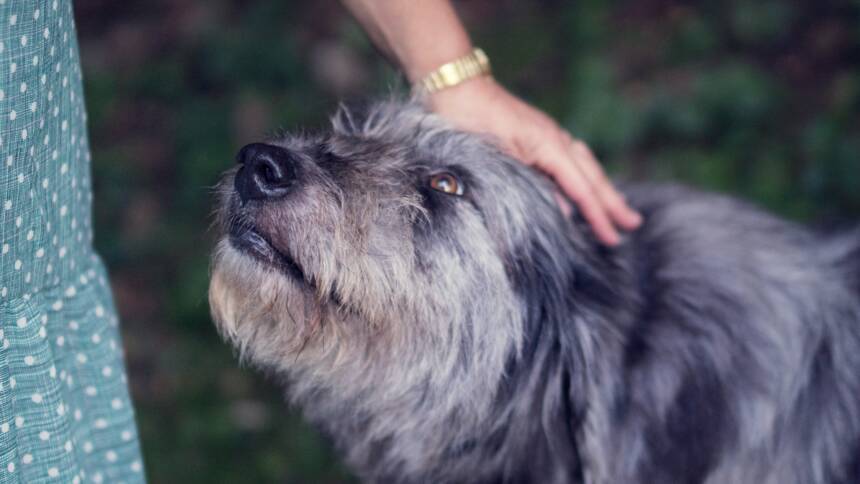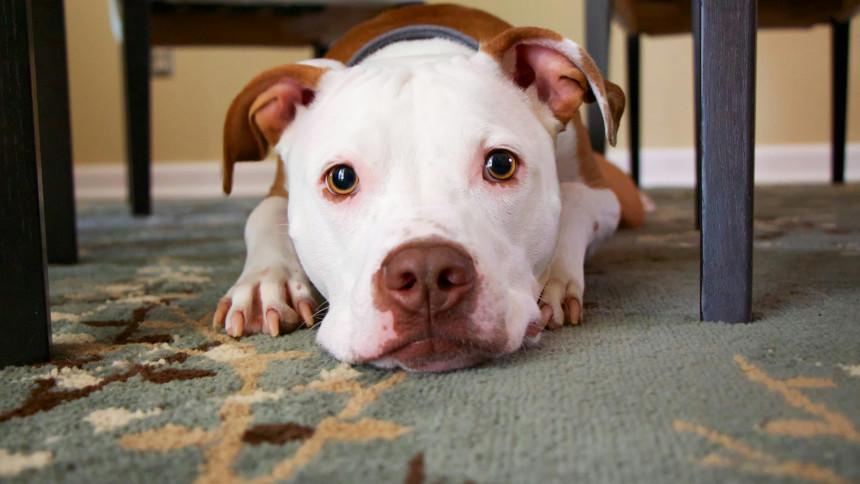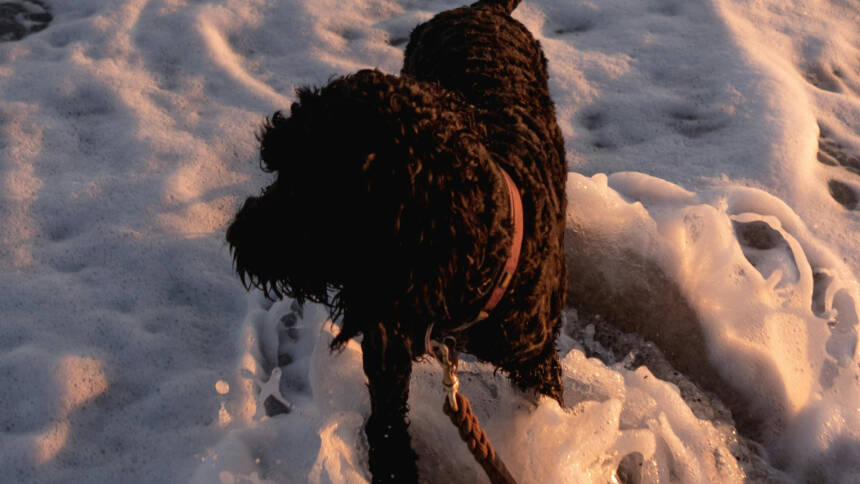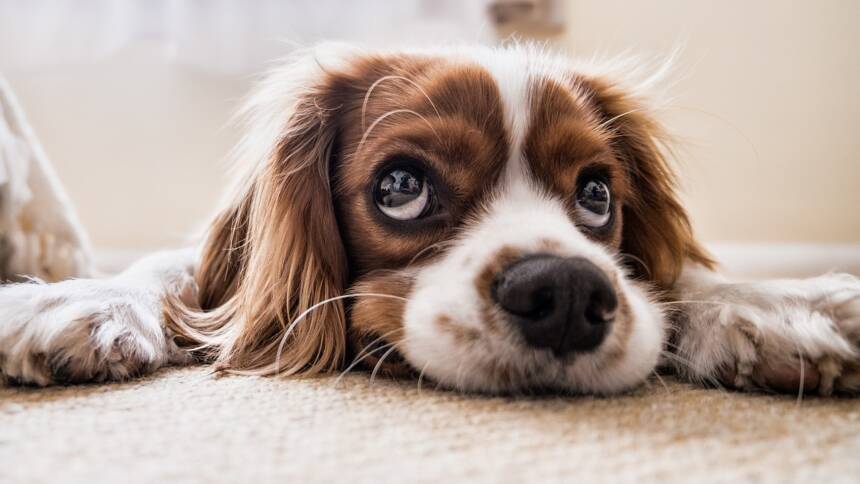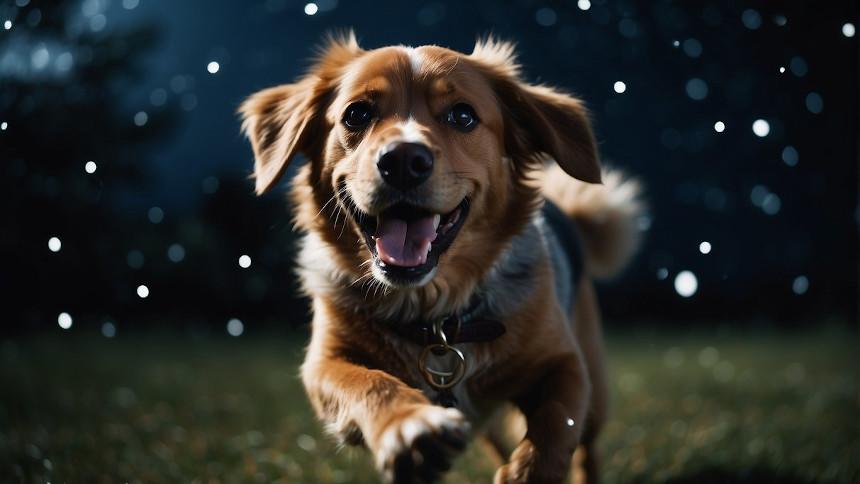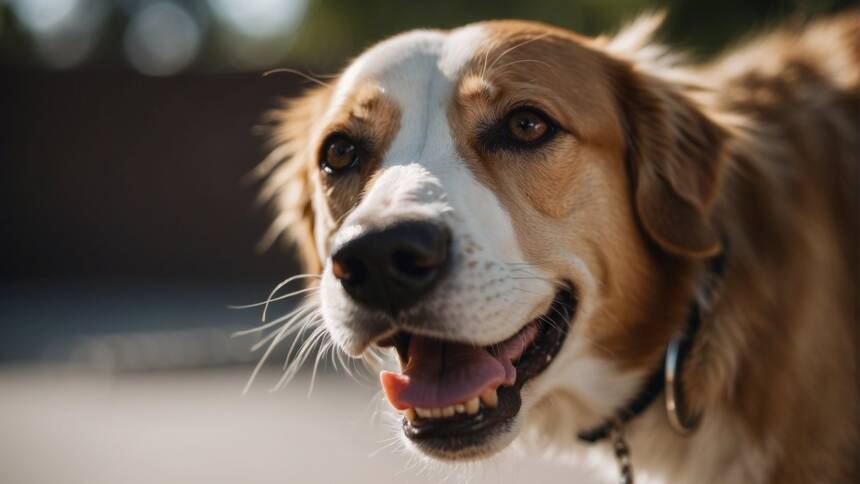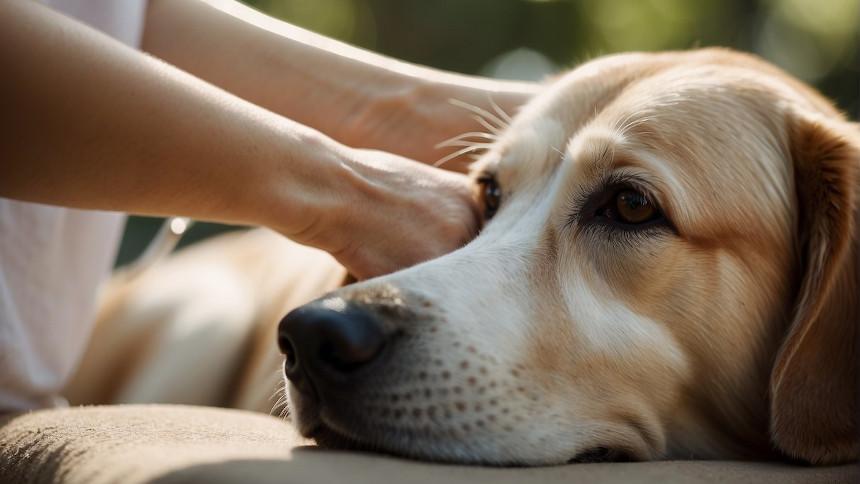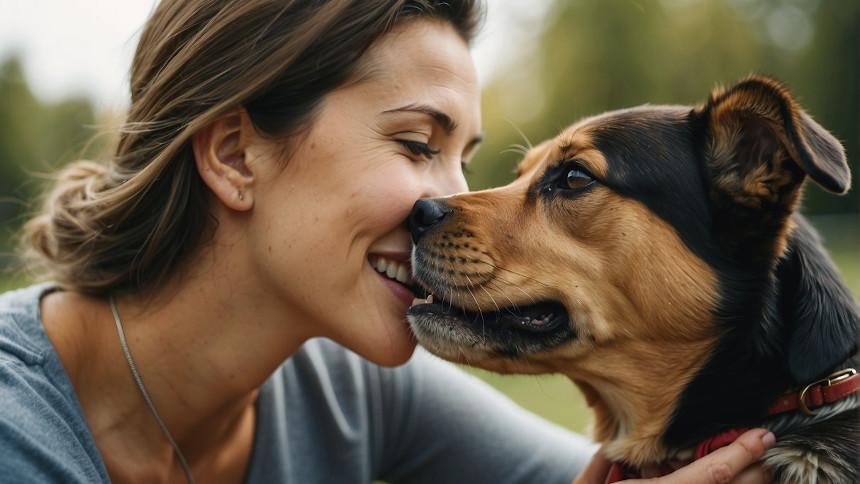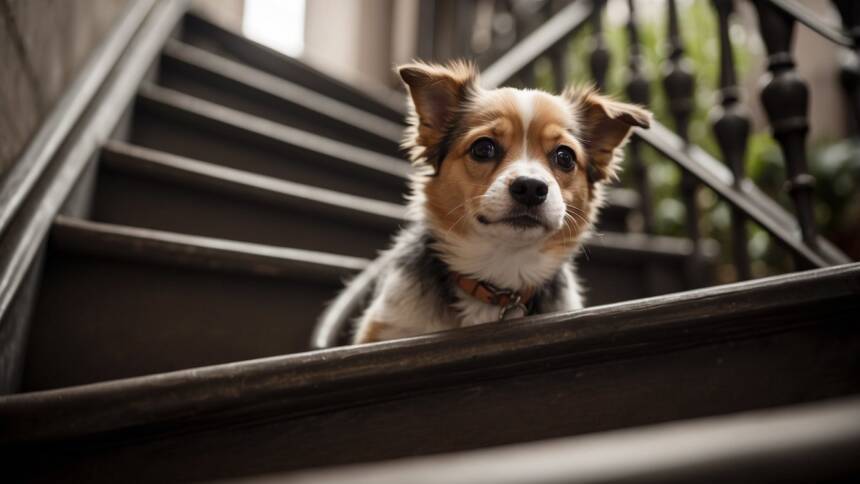Changes in a dog’s fur color, particularly lightening, raise questions and concerns among pet owners. While the transformation can be a natural part of aging, with dogs’ fur graying much like human hair, it’s important to understand that there can be other reasons behind the change. As dogs grow older, their melanin production, which gives the hair its pigment, can decrease, leading to a lighter coloration of their fur.
Multiple factors can influence a dog’s fur to turn lighter. Conditions such as canine flank alopecia cause hair loss and subsequent regrowth that may be lighter in color, while environmental factors and sun exposure can also contribute to changes in fur pigmentation. Even the dog’s nutrition and overall health can play a role; deficiencies in diet or underlying medical issues often manifest in the condition of their skin and coat.
This article aims to build on existing knowledge and share insights into why a dog’s hair may get lighter. By learning more about the causes, pet owners can better assess whether a trip to the vet is necessary or if changes observed are part of a normal process. It’s valuable to share this information so that dog owners can best care for their furry companions, maintaining their health and well-being.
Understanding Dog Hair Color Changes
As dogs mature, their coat color may undergo changes. Factors such as genetics, aging, and environmental influences play critical roles in these variations.
Role of Genetics in Coat Color
Genetics are the primary determinants of a dog’s coat color. Two types of pigment are involved, eumelanin and pheomelanin, which dictate the black-brown and yellow-red hues, respectively. The distribution and quantity of these pigments are encoded in a dog’s DNA, influencing the initial color and pattern of the coat.
Effects of Aging on Dog Hair Color
Aging can visibly alter the pigmentation of a dog’s hair. The production of melanin, which gives hair its color, slows with age, leading to graying or whitening of the coat. These changes in color can be a normal part of the aging process and are akin to humans developing gray hair.
Influence of Sunlight and Environmental Factors
Sun exposure and environmental factors also play a part in changes to a dog’s hair color. Prolonged exposure to sunlight can fade the color of a dog’s coat, lightening it over time. Environmental factors such as diet, climate, and exposure to water can lead to discoloration, with variations often seen in dogs that spend a lot of time outdoors or in specific working conditions.
Health-Related Factors Affecting Dog Hair
Understanding the health-related factors that affect a dog’s hair is vital in maintaining their overall well-being. Conditions such as skin disorders, nutritional imbalances, and thyroid dysfunction can all contribute to changes in hair color and texture.
Common Canine Skin Conditions
Skin conditions like pemphigus foliaceus, which is an autoimmune disease, can lead to changes in hair pigmentation and texture. The skin becomes crusted and may lose hair, appearing lighter in areas of inflammation. The adrenal gland’s health also impacts skin, as issues like Cushing’s disease can cause thinning and lightening of the hair.
The Impact of Nutrition and Diet
A dog’s coat health is heavily influenced by their diet and nutrition. Deficiencies in zinc and copper, which are vital for melanin production in the hair, can lead to a lighter coat. Additionally, ensuring a diet rich in essential fatty acids aids in maintaining a healthy, shiny, and well-pigmented coat. Nutritional imbalances often reflect on the quality of a dog’s hair.
Thyroid Dysfunction in Dogs
Thyroid dysfunction, specifically hypothyroidism, is a common endocrine disorder in dogs that results in several coat changes, including dullness or lightening of the hair. The thyroid gland regulates metabolism and energy balance, affecting the growth cycle of hair. When thyroxine levels are low, it can impair new hair growth, leading to an alteration in hair color and a sparse, thin coat.
Dog Breeds and Hair Color Variability
In the tapestry of canine breeds, hair color is a characteristic that varies widely and can change due to genetic factors and environmental influences.
Breed-Specific Coat Colors
Labrador Retrievers: This breed is illustrative of genetic color determination, famously coming in three standard colors: black, chocolate, and yellow. These colors are influenced by the expression of specific genes such as the B (black) and E (yellow) loci.
Golden Retrievers: Contrasting their name, Golden Retrievers possess a spectrum of shades within the ‘golden’ category, spanning from light cream to dark golden. The intensity of the color is affected by the gene that controls the expression of pheomelanin.
Irish Setters: Known for their mahogany to rich red-colored coats, this breed’s vibrant coat color is the result of high pheomelanin pigmentation, which is unaffected by eumelanin that influences darker colors.
Notable Changes in Popular Breeds
German Shepherds: Often perceived as typically having black and tan coats, German Shepherds can undergo a lightening of their hair as they mature. The dark, saddle-like covering common in puppies often fades to lighter tan shades as the dog ages.
Labradors: A unique feature of some Labradors, especially those with a yellow coat, is the gradual lightening or darkening of their fur throughout their lifetime. This change can be influenced by factors such as sunlight exposure and nutrition.
Terriers: Among terriers, one may observe a variety of coat colors and patterns ranging from solid to mixtures of several colors. The Yorkshire Terrier, for example, is born with a black and tan coat that gradually transitions to blue and gold.
Grooming and External Factors
When discussing the lightening of a dog’s fur color, grooming habits and environmental exposures play significant roles. Regular grooming practices can reveal lighter fur underneath, while external chemical exposure could potentially lead to color changes or irritation.
Grooming Practices and Hair Color
The grooming routine for a dog can impact the perceived color of its fur. Shaving or trimming can remove the darker topcoat, often revealing a lighter undercoat. This is especially true in breeds with dual-layered coats where the topcoat may be more pigmented. If a dog has black fur, the top layer may appear particularly dark, and cutting this away can show a more subdued base color. Furthermore, frequent baths with certain shampoos that dry out the fur can lead to a faded appearance over time.
- Black fur: May appear significantly lighter after grooming reveals the undercoat.
- Shaving: Can lead to a change in appearance, particularly for dual-coated dogs.
External Chemicals and Irritants
The chemicals that dogs are exposed to in their environment can alter fur color as well. These may include pollutants, pool chemicals, or even substances used in lawns and gardens. Such chemicals can cause a bleaching effect or an irritation response, which in turn affects the coloration of their fur. In some cases, the reaction to the irritant can cause the skin to produce more oils or change the texture of the fur, affecting how the color appears.
- Irritants and chemicals might lead to:
- Bleaching effect: Lightening the fur color.
- Irritation: Altering oil production, therefore changing fur’s sheen and color appearance.
Owners should consider both these factors when they notice changes in their dog’s fur color and adjust grooming techniques and environmental exposure accordingly to maintain the natural coloration of their pet’s coat.
Uncommon Conditions and Discolorations
In the world of canine health, certain conditions lead to less common changes in coat and skin color. Two notable concerns are Vitiligo and Depigmentation, and changes in nose pigmentation.
Vitiligo and Depigmentation
Vitiligo is a condition in dogs that causes the melanocyte cells in the skin to stop producing melanin, leading to patchy depigmentation. This manifests as random, irregular white patches on the coat, which is the result of pigment loss. It can start at any age and is typically more noticeable in dogs with darker fur.
Nose Color Changes in Dogs
Changes in the color of a dog’s nose can range from normal aging to conditions like snow nose and Dudley nose. Snow nose, also known as winter nose, involves partial loss of pigmentation in the nose during colder months, which may revert back in the summer. Dudley nose is a term for a condition where a nose that was once pigmented turns pink or light brown permanently. It’s not associated with health risks, but rather is a cosmetic change.
Caring for Your Dog’s Coat
Proper grooming is a cornerstone of dog coat care. Regular brushing, bathing when necessary, and timely haircuts for breeds with longer coats are essential. Brushing removes dirt, spreads natural oils throughout the coat, prevents tangles, and can be a pleasant bonding experience. It also plays a critical role in managing shedding by removing loose fur.
Health issues can be spotted early with routine grooming. Owners might notice signs of skin conditions, parasites, or unusual lumps, allowing for swift veterinary intervention. Nutrition profoundly influences coat health. A balanced diet ensures dogs receive essential fatty acids, vitamins, and minerals, contributing to a lustrous coat.
It is essential to consider the effects of sun exposure. Dogs with lighter coats or sparse fur are more susceptible to sunburn. Protective clothing or dog-safe sunscreen can mitigate this risk. Conversely, excessive sun can also lead to coat discoloration, particularly in darker dogs.
Shedding cycles are natural in dogs and can be influenced by health, nutrition, and seasonal changes. While shedding is routine, an increase in hair loss could indicate a health problem and should be examined by a veterinarian.
In summary, maintaining a dog’s coat requires:
- Regular Grooming:
- Brushing several times per week
- Bathing with dog-specific shampoo
- Haircuts for long-haired breeds
- Health Monitoring:
- Checking for parasites, skin conditions, and irregularities while grooming
- Nutritional Support:
- High-quality dog food with omega-3 and omega-6 fatty acids
- Supplements as prescribed by a vet
- Sun Protection:
- Limiting extended exposure
- Using protective wear or sunscreen for dogs
- Understanding Shedding:
- Recognizing normal shedding patterns
- Consulting a vet if changes in shedding occur
Careful and attentive care for a dog’s coat can lead to a healthy, happy, and handsome canine companion.
